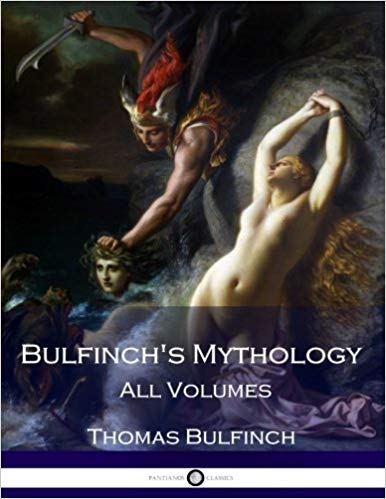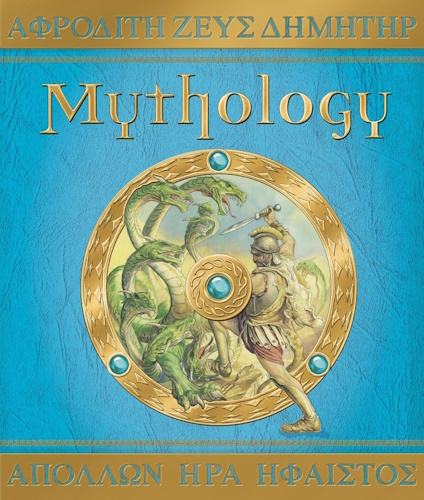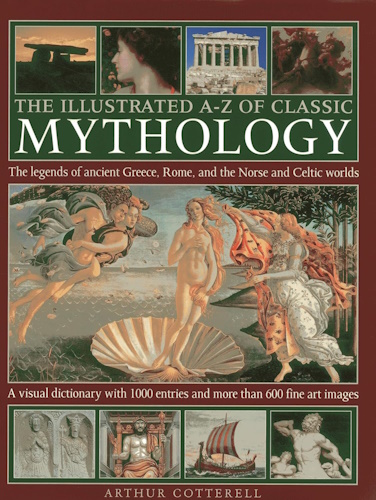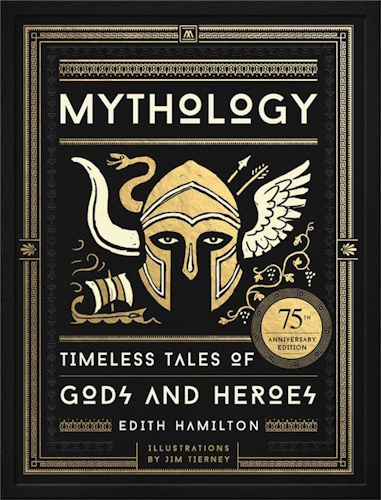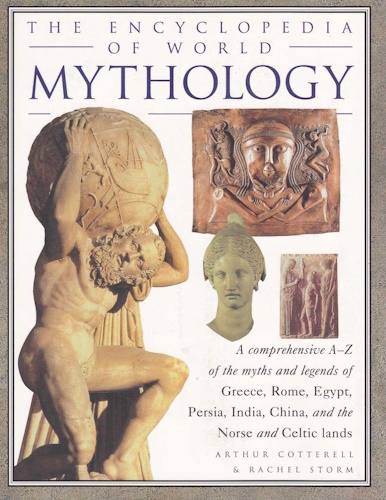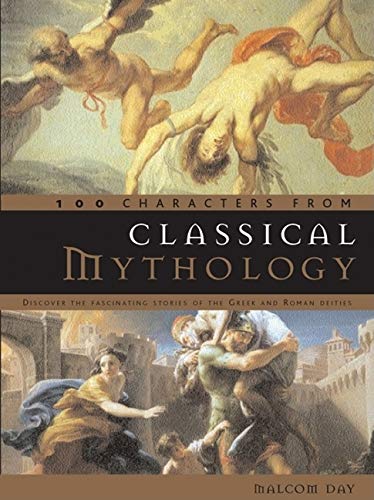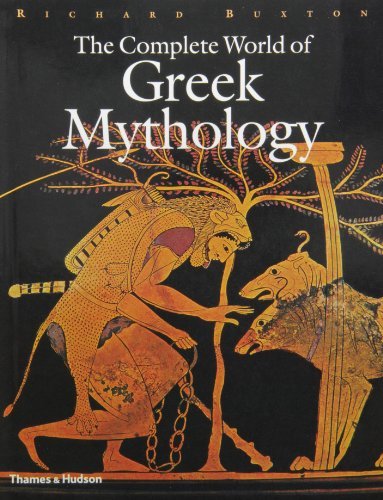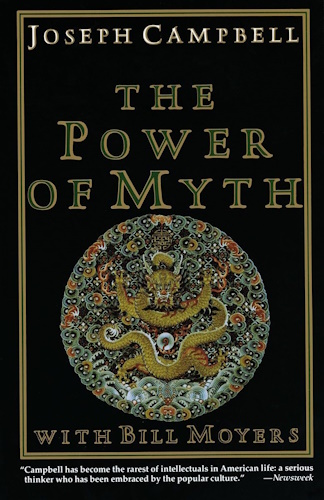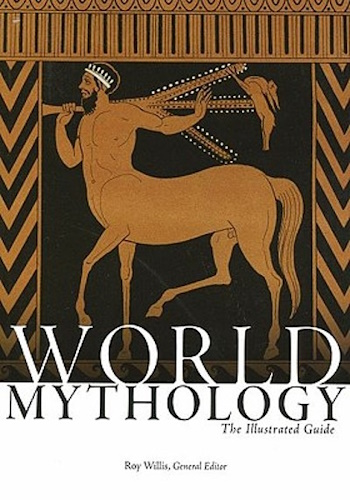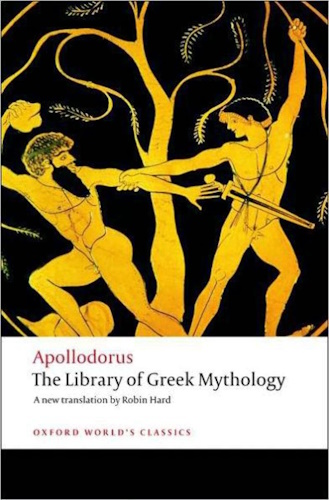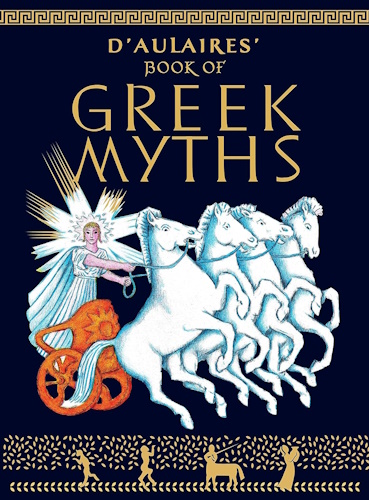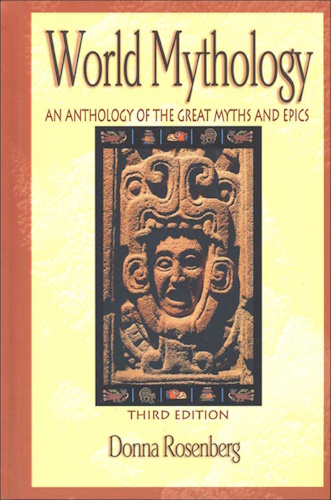
![]()
![]()
OGIER, THE DANE (Continued)
WHEN Charlemagne had somewhat recovered his composure he was surprised to observe that Ogier appeared in good case, and had a healthy color in his cheeks. He turned to the Archbishop, who could not help blushing as he met his eye. "By the head of Bertha, my queen," said Charlemagne, "Ogier has had good quarters in your castle, my Lord Archbishop; but so much the more am I indebted to you." All the barons laughed and jested with Turpin, who only said, "Laugh as much as you please, my lords; but for my part I am not sorry to see the arm in full vigor that is to avenge us on the proud Saracen."
Charlemagne immediately despatched his herald, accepting the challenge, and appointing the next day but one for the encounter. The proud and crafty Bruhier laughed scornfully when he heard the reply accepting his challenge, for he had a reliance on certain resources besides his natural strength and skill. However, he swore by Mahomet to observe the conditions as proposed and agreed upon.
Ogier now demanded his armor, and it was brought to him in excellent condition, for the good Turpin had kept it faithfully; but it was not easy to provide a horse for the occasion. Charlemagne had the best horses of his stables brought out, except Blanchard, his own charger; but all in vain, the weight of Ogier bent their backs to the ground. In this embarrassment the Archbishop remembered that the Emperor had given Beiffror to the Abbot of St. Faron, and sent off a courier in haste to re-demand him.
Monks are hard masters, and the one who directed the laborers at the abbey had but too faithfully obeyed the orders of the Abbot. Poor Beiffror was brought back, lean, spiritless, and chafed with the harness of the vile cart that he had had to draw so long. He carried his head down, and trod heavily before Charlemagne; but when he heard the voice of Ogier he raised his head, he neighed, his eyes flashed, his former ardor showed itself by the force with which he pawed the ground. Ogier caressed him, and the good steed seemed to return his caresses; Ogier mounted him, and Beiffror, proud of carrying his master again, leapt and curvetted with all his youthful vigor.
Nothing being now wanted, Charlemagne, at the head of his army, marched forth from the city of Paris, and occupied the hill of Montmartre, whence the view extended over the plain of St. Denis, where the battle was to be fought.
When the appointed day came the Dukes Namo and Salomon, as seconds of Ogier, accompanied him to the place marked out for the lists, and Bruhier, with two distinguished Emirs, presented himself on the other side.
Bruhier was in high spirits, and jested with his friends, as he advanced, upon the appearance of Beiffror. "Is that the horse they presume to match with Marchevallee, the best steed that ever fed in the vales of Mount Atlas?" But now the combatants, having met and saluted each other, ride apart to come together in full career. Beiffror flew over the plain, and met the adversary more than half-way. The lances of the two combatants were shivered at the shock, and Bruhier was astonished to see almost at the same instant the sword of Ogier gleaming above his head. He parried it with his buckler, and gave Ogier a blow on his helmet, who returned it with another, better aimed or better seconded by the temper of his blade, for it cut away part of Bruhier's helmet, and with it his ear and part of his cheek. Ogier, seeing the blood, did not immediately repeat his blow, and Bruhier seized the moment to gallop off at one side. As he rode he took a vase of gold which hung at his saddle-bow, and bathed with its contents the wounded part. The blood instantly ceased to flow, the ear and the flesh were restored quite whole, and the Dane was astonished to see his antagonist return to the ground as sound as ever.
Bruhier laughed at his amazement. "Know," said he, "that I possess the precious balm that Joseph of Arimathea used upon the body of the crucified one, whom you worship. If I should lose an arm I could restore it with a few drops of this. It is useless for you to contend with me. Yield yourself, and, as you appear to be a strong fellow, I will make you first oarsman in one of my galleys."
Ogier, though boiling with rage, forgot not to implore the assistance of Heaven. "O Lord!" he exclaimed, "suffer not the enemy of thy name to profit by the powerful help of that which owes all its virtue to thy divine blood." At these words he attacked Bruhier again with more vigor than ever; both struck terrible blows, and made grievous wounds; but the blood flowed from those of Ogier, while Bruhier stanched his by the application of his balm. Ogier, desperate at the unequal contest, grasped Cortana with both hands, and struck his enemy such a blow that it cleft his buckler, and cut off his arm with it; but Bruhier at the same time launched one at Ogier, which, missing him, struck the head of Beiffror, and the good horse fell, and drew down his master in his fall.
Bruhier had time to leap to the ground, to pick up his arm and apply his balsam; then, before Ogier had recovered his footing, he rushed forward with sword uplifted to complete his destruction.
Charlemagne, from the height of Montmartre, seeing the brave Ogier in this situation, groaned, and was ready to murmur against Providence; but the good Turpin, raising his arms, with a faith like that of Moses, drew down upon the Christian warrior the favor of Heaven.
Ogier, promptly disengaging himself, pressed Bruhier with so much impetuosity that he drove him to a distance from his horse, to whose saddle-bow the precious balm was suspended; and very soon Charlemagne saw Ogier, now completely in the advantage, bring his enemy to his knees, tear off his helmet, and, with a sweep of his sword, strike his head from his body.
After the victory, Ogier seized Marchevallee, leaped upon his back, and became possessed of the precious flask, a few drops from which closed his wounds and restored his strength. The French knights who had been Bruhier's captives, now released, pressed round Ogier to thank him for their deliverance.
Charlemagne and his nobles, as soon as their attention was relieved from the single combat, perceived from their elevated position an unusual agitation in the enemy's camp. They attributed it at first to the death of their general, but soon the noise of arms, the cries of combatants, and new standards which advanced, disclosed to them the fact that Bruhier's army was attacked by a new enemy.
The Emperor was right; it was the brave Carahue of Mauritania, who, with an army, had arrived in France, resolved to attempt the liberation of Ogier, his brother in arms. Learning on his arrival the changed aspect of affairs, he hesitated not to render a signal service to the Emperor, by attacking the army of Bruhier in the midst of the consternation occasioned by the loss of its commander.
Ogier recognized the standard of his friend, and leaping upon Marchevallee, flew to aid his attack. Charlemagne followed with his army; and the Saracen host, after an obstinate conflict, was forced to surrender unconditionally.
The interview of Ogier and Carahue was such as might be anticipated of two such attached friends and accomplished knights. Charlemagne went to meet them, embraced them, and putting the King of Mauritania on his right and Ogier on his left, returned with triumph to Paris. There the Empress Bertha and the ladies of her court crowned them with laurels, and the sage and gallant Eginhard, chamberlain and secretary of the Emperor, wrote all these great events in his history.
A few days after Guyon, King of Denmark, arrived in France with a chosen band of knights, and sent an ambassador to Charlemagne, to say that he came, not as an enemy, but to render homage to him as the best knight of the time and the head of the Christian world. Charlemagne gave the ambassador a cordial reception, and mounting his horse, rode forward to meet the King of Denmark.
These great princes, being assembled at the court of Charles, held council together, and the ancient and sage barons were called to join it.
It was decided that the united Danish and Mauritanian armies should cross the sea and carry the war to the country of the Saracens, and that a thousand French knights should range themselves under the banner of Ogier, the Dane, who, though not a king, should have equal rank with the two others.
We have not space to record all the illustrious actions performed by Ogier and his allies in this war. Suffice it to say, they subdued the Saracens of Ptolemais and Judaea, and, erecting those regions into a kingdom, placed the crown upon the head of Ogier. Guyon and Carahue then left him, to return to their respective dominions. Ogier adopted Walter, the son of Guyon of Denmark, to be his successor in his kingdom. He superintended his education, and saw the young prince grow up worthy of his cares. But Ogier, in spite of all the honors of his rank, often regretted the court of Charlemagne, the Duke Namo, and Salomon of Brittany, for whom he had the respect and attachment of a son. At last, finding Walter old enough to sustain the weight of government, Ogier caused a vessel to be prepared secretly, and, attended only by one squire, left his palace by night, and embarked to return to France.
The vessel, driven by a fair wind, cut the sea with the swiftness of a bird; but on a sudden it deviated from its course, no longer obeyed the helm, and sped fast towards a black promontory which stretched into the sea. This was a mountain of loadstone, and, its attractive power increasing as the distance diminished, the vessel at last flew with the swiftness of an arrow towards it, and was dashed to pieces on its rocky base. Ogier alone saved himself, and reached the shore on a fragment of the wreck.
Ogier advanced into the country, looking for some marks of inhabitancy, but found none. On a sudden he encountered two monstrous animals, covered with glittering scales, accompanied by a horse breathing fire. Ogier drew his sword and prepared to defend himself; but the monsters, terrific as they appeared, made no attempt to assail him, and the horse, Papillon, knelt down, and appeared to court Ogier to mount upon his back. Ogier hesitated not to see the adventure through; he mounted Papillon, who ran with speed, and soon cleared the rocks and precipices which hemmed in and concealed a beautiful landscape. He continued his course till he reached a magnificent palace, and, without allowing Ogier time to admire it, crossed a grand court-yard adorned with colonnades, and entered a garden, where, making his way through alleys of myrtle, he checked his course, and knelt down on the enamelled turf of a fountain.
Ogier dismounted and took some steps along the margin of the stream, but was soon stopped by meeting a young beauty, such as they paint the Graces, and almost as lightly attired as they. At the same moment, to his amazement, his armor fell off of its own accord. The young beauty advanced with a tender air, and placed upon his head a crown of flowers. At that instant the Danish hero lost his memory; his combats, his glory, Charlemagne and his court, all vanished from his mind; he saw only Morgana, he desired nothing but to sigh forever at her feet.
We abridge the narrative of all the delights which Ogier enjoyed for more than a hundred years. Time flew by, leaving no impression of its flight. Morgana's youthful charms did not decay, and Ogier had none of those warnings of increasing years which less favored mortals never fail to receive. There is no knowing how long this blissful state might have lasted, if it had not been for an accident, by which Morgana one day, in a sportive moment, snatched the crown from his head. That moment Ogier regained his memory, and lost his contentment. The recollection of Charlemagne, and of his own relatives and friends, saddened the hours which he passed with Morgana. The fairy saw with grief the changed looks of her lover. At last she drew from him the acknowledgment that he wished to go, at least for a time, to revisit Charles's court. She consented with reluctance, and with her own hands helped to reinvest him with his armor. Papillon was led forth, Ogier mounted him, and, taking a tender adieu of the tearful Morgana, crossed at rapid speed the rocky belt which separated Morgana's palace from the borders of the sea. The sea-goblins which had received him at his coming awaited him on the shore. One of them took Ogier on his back, and the other placing himself under Papillon, they spread their broad fins, and in a short time traversed the wide space that separates the isle of Avalon from France. They landed Ogier on the coast of Languedoc, and then plunged into the sea and disappeared.
Ogier remounted on Papillon, who carried him across the kingdom almost as fast as he had passed the sea. He arrived under the walls of Paris, which he would scarcely have recognized if the high towers of St. Genevieve had not caught his eye. He went straight to the palace of Charlemagne, which seemed to him to have been entirely rebuilt. His surprise was extreme, and increased still more on finding that he understood with difficulty the language of the guards and attendants in replying to his questions; and seeing them smile as they tried to explain to one another the language in which he addressed them. Presently the attention of some of the barons who were going to court was attracted to the scene, and Ogier, who recognized the badges of their rank, addressed them, and inquired if the Dukes Namo and Salomon were still residing at the Emperor's court. At this question the barons looked at one another in amazement; and one of the eldest said to the rest, "How much this knight resembles the portrait of my grand-uncle, Ogier the Dane." "Ah! my dear nephew, I am Ogier the Dane," said he; and he remembered that Morgana had told him that he was little aware of the flight of time during his abode with her.
The barons, more astonished than ever, concluded to conduct him to the monarch who then reigned, the great Hugh Capet.
The brave Ogier entered the palace without hesitation; but when, on reaching the royal hall, the barons directed him to make his obeisance to the King of France, he was astonished to see a man of short stature and large head, whose air, nevertheless, was noble and martial, seated upon the throne on which he had so often seen Charlemagne, the tallest and handsomest sovereign of his time.
Ogier recounted his adventures with simplicity and affectedness. Hugh Capet was slow to believe him; but Ogier recalled so many proofs and circumstances, that at last he was forced to recognize the aged warrior to be the famous Ogier the Dane.
The king informed Ogier of the events which had taken place during his long absence; that the line of Charlemagne was extinct; that a new dynasty had commenced; that the old enemies of the kingdom, the Saracens, were still troublesome; and that at that very time an army of those miscreants was besieging the city of Chartres, to which he was about to repair in a few days to its relief. Ogier, always inflamed with the love of glory, offered the service of his arm, which the illustrious monarch accepted graciously, and conducted him to the queen. The astonishment of Ogier was redoubled when he saw the new ornaments and head-dresses of the ladies; still, the beautiful hair which they built up on their foreheads, and the feathers interwoven, which waved with so much grace, gave them a noble air that delighted him. His admiration increased when, instead of the old Empress Bertha, he saw a young queen who combined a majestic mien with the graces of her time of life, and manners candid and charming, suited to attach all hearts. Ogier saluted the youthful queen with a respect so profound that many of the courtiers took him for a foreigner, or at least for some nobleman brought up at a distance from Paris, who retained the manners of what they called the old court.
When the queen was informed by her husband that it was the celebrated Ogier the Dane whom he presented to her, whose memorable exploits she had often read in the chronicles of antiquity, her surprise was extreme, which was increased when she remarked the dignity of his address, the animation and even the youthfulness of his countenance. This queen had too much intelligence to believe hastily; proof alone could compel her assent; and she asked him many questions about the old court of Charlemagne, and received such instructive and appropriate answers as removed every doubt. It is to the corrections which Ogier was at that time enabled to make to the popular narratives of his exploits that we are indebted for the perfect accuracy and trustworthiness of all the details of our own history.
King Hugh Capet, having received that same evening couriers from the inhabitants of Chartres, informing him that they were hard pressed by the besiegers, resolved to hasten with Ogier to their relief.
Ogier terminated this affair as expeditiously as he had so often done others. The Saracens having dared to offer battle, he bore the Oriflamme through the thickest of their ranks; Papillon, breathing fire from his nostrils, threw them into disorder, and Cortana, wielded by his invincible arm, soon finished their overthrow.
The king, victorious over the Saracens, led back the Danish hero to Paris, where the deliverer of France received the honors due to his valor. Ogier continued some time at the court, detained by the favor of the king and queen; but erelong he had the pain to witness the death of the king. Then it was that, impressed with all the perfections which he had discerned in the queen, he could not withhold the tender homage of the offer of his hand. The queen would perhaps have accepted it, she had even called a meeting of her great barons to deliberate on the proposition, when, the day before the meeting was to be held, at the moment when Ogier was kneeling at her feet, she perceived a crown of gold which an invisible hand had placed on his brow, and in an instant a cloud enveloped Ogier, and he disappeared forever from her sight. It was Morgana, the fairy, whose jealousy was awakened at what she beheld, who now resumed her power, and took him away to dwell with her in the island of Avalon. There, in company with the great King Arthur of Britain, he still lives, and when his illustrious friend shall return to resume his ancient reign he will doubtless return with him, and share his triumph.
-
Urantia Book, 44:0.11 - The Celestial Artisans
Never in your long ascendancy will you lose the power to recognize your associates of former existences. Always, as you ascend inward in the scale of life, will you retain the ability to recognize and fraternize with the fellow beings of your previous and lower levels of experience. Each new translation or resurrection will add one more group of spirit beings to your vision range without in the least depriving you of the ability to recognize your friends and fellows of former estates.
-
Princess Bride 1987 Wallace Shawn (Vizzini) and Mandy Patinkin (Inigo Montoya)
Vizzini: HE DIDN'T FALL? INCONCEIVABLE.
Inigo Montoya: You keep using that word. I do not think it means what you think it means. -
Urantia Book, 117:4.14 - The Finite God
And here is mystery: The more closely man approaches God through love, the greater the reality -- actuality -- of that man. The more man withdraws from God, the more nearly he approaches nonreality -- cessation of existence. When man consecrates his will to the doing of the Father's will, when man gives God all that he has, then does God make that man more than he is.
-
Urantia Book, 167:7.4 - The Talk About Angels
"And do you not remember that I said to you once before that, if you had your spiritual eyes anointed, you would then see the heavens opened and behold the angels of God ascending and descending? It is by the ministry of the angels that one world may be kept in touch with other worlds, for have I not repeatedly told you that I have other sheep not of this fold?"
-
Urantia Book, Foreword - 0:12.12 - The Trinities
But we know that there dwells within the human mind a fragment of God, and that there sojourns with the human soul the Spirit of Truth; and we further know that these spirit forces conspire to enable material man to grasp the reality of spiritual values and to comprehend the philosophy of universe meanings. But even more certainly we know that these spirits of the Divine Presence are able to assist man in the spiritual appropriation of all truth contributory to the enhancement of the ever-progressing reality of personal religious experience—God-consciousness.
-
Urantia Book, 1:4.3 - The Mystery Of God
When you are through down here, when your course has been run in temporary form on earth, when your trial trip in the flesh is finished, when the dust that composes the mortal tabernacle "returns to the earth whence it came"; then, it is revealed, the indwelling "Spirit shall return to God who gave it." There sojourns within each moral being of this planet a fragment of God, a part and parcel of divinity. It is not yet yours by right of possession, but it is designedly intended to be one with you if you survive the mortal existence.
-
Urantia Book, 1:4.1 - The Mystery Of God
And the greatest of all the unfathomable mysteries of God is the phenomenon of the divine indwelling of mortal minds. The manner in which the Universal Father sojourns with the creatures of time is the most profound of all universe mysteries; the divine presence in the mind of man is the mystery of mysteries.
-
Urantia Book, 1:4.6 - The Mystery Of God
To every spirit being and to every mortal creature in every sphere and on every world of the universe of universes, the Universal Father reveals all of his gracious and divine self that can be discerned or comprehended by such spirit beings and by such mortal creatures. God is no respecter of persons, either spiritual or material. The divine presence which any child of the universe enjoys at any given moment is limited only by the capacity of such a creature to receive and to discern the spirit actualities of the supermaterial world.
-
Urantia Book, 11:0.1 - The Eternal Isle Of Paradise
Paradise is the eternal center of the universe of universes and the abiding place of the Universal Father, the Eternal Son, the Infinite Spirit, and their divine co-ordinates and associates. This central Isle is the most gigantic organized body of cosmic reality in all the master universe. Paradise is a material sphere as well as a spiritual abode. All of the intelligent creation of the Universal Father is domiciled on material abodes; hence must the absolute controlling center also be material, literal. And again it should be reiterated that spirit things and spiritual beings are real.
-
Urantia Book, 50:6.4 - Planetary Culture
Culture presupposes quality of mind; culture cannot be enhanced unless mind is elevated. Superior intellect will seek a noble culture and find some way to attain such a goal. Inferior minds will spurn the highest culture even when presented to them ready-made.
-
Urantia Book, 54:1.6 - True And False Liberty
True liberty is the associate of genuine self-respect; false liberty is the consort of self-admiration. True liberty is the fruit of self-control; false liberty, the assumption of self-assertion. Self-control leads to altruistic service; self-admiration tends towards the exploitation of others for the selfish aggrandizement of such a mistaken individual as is willing to sacrifice righteous attainment for the sake of possessing unjust power over his fellow beings.
-
Urantia Book, 54:1.9 - True And False Liberty
How dare the self-willed creature encroach upon the rights of his fellows in the name of personal liberty when the Supreme Rulers of the universe stand back in merciful respect for these prerogatives of will and potentials of personality! No being, in the exercise of his supposed personal liberty, has a right to deprive any other being of those privileges of existence conferred by the Creators and duly respected by all their loyal associates, subordinates, and subjects.
-
Urantia Book, 54:1.8 - True And False Liberty
There is no error greater than that species of self-deception which leads intelligent beings to crave the exercise of power over other beings for the purpose of depriving these persons of their natural liberties. The golden rule of human fairness cries out against all such fraud, unfairness, selfishness, and unrighteousness.
